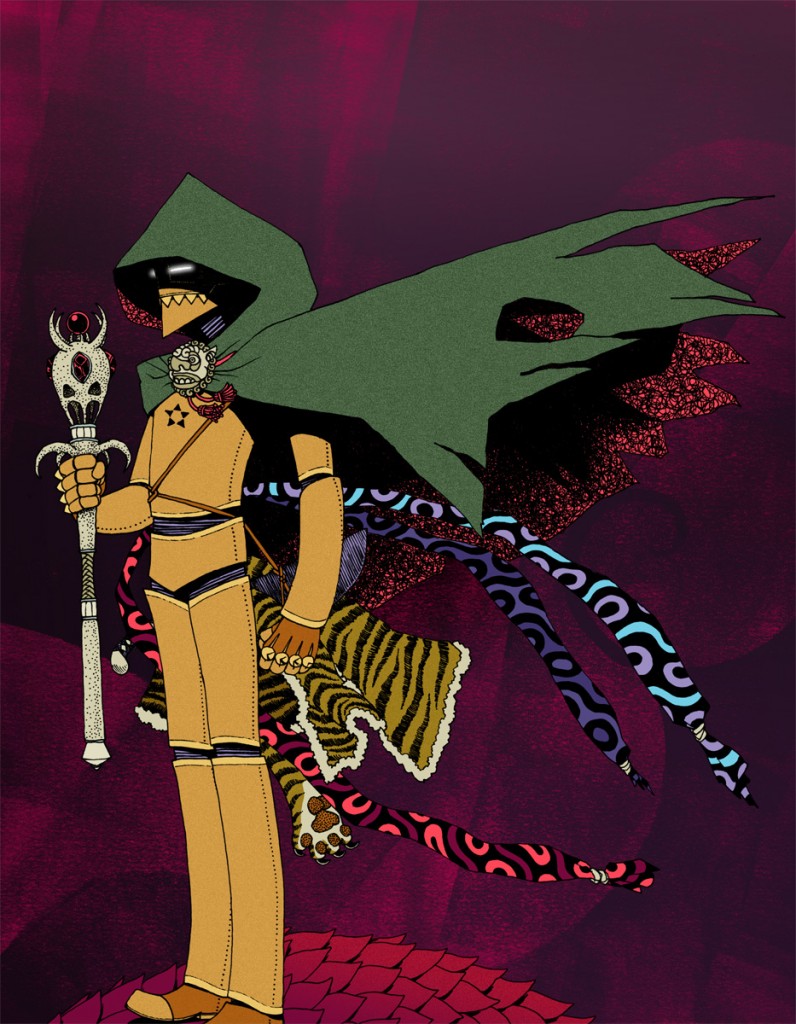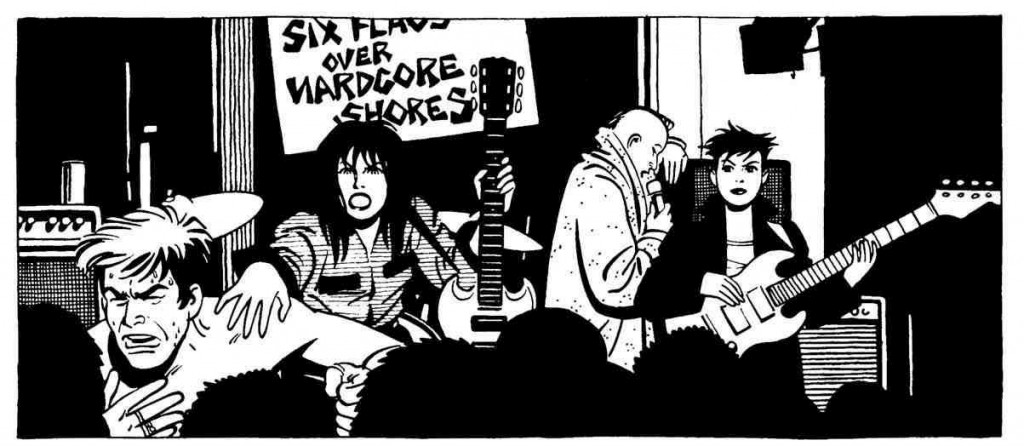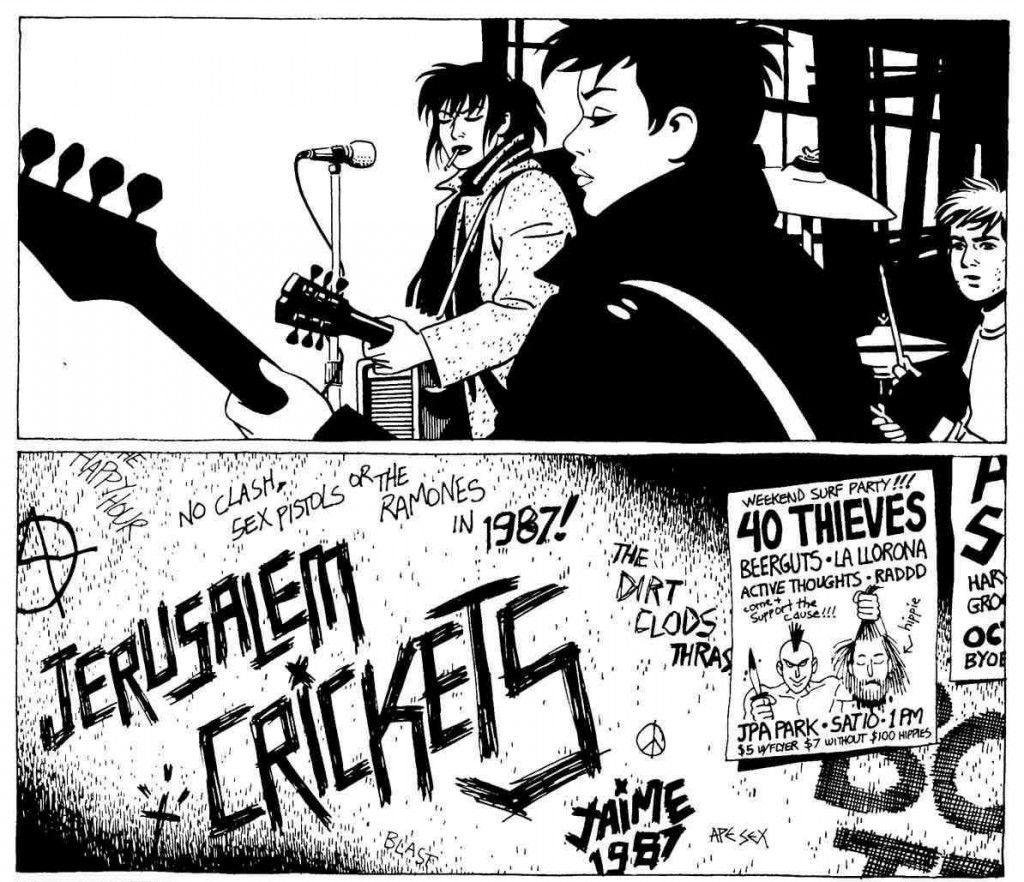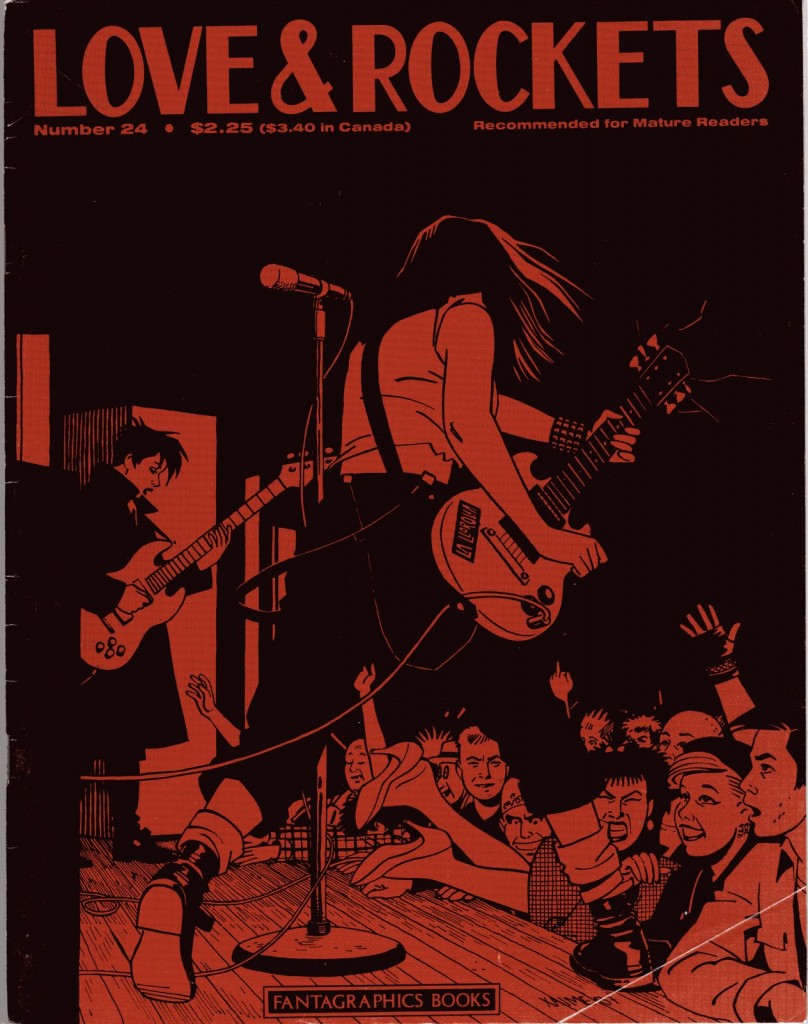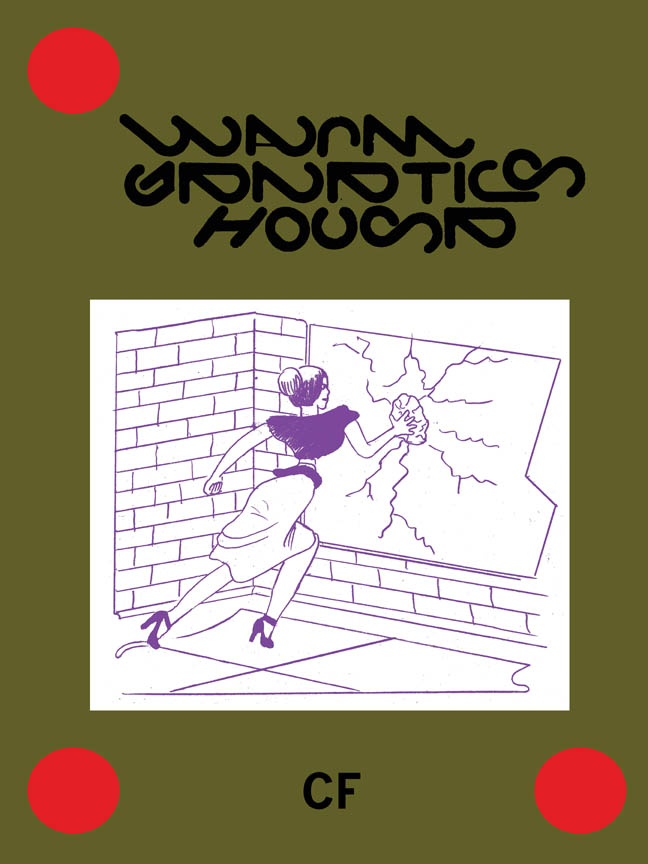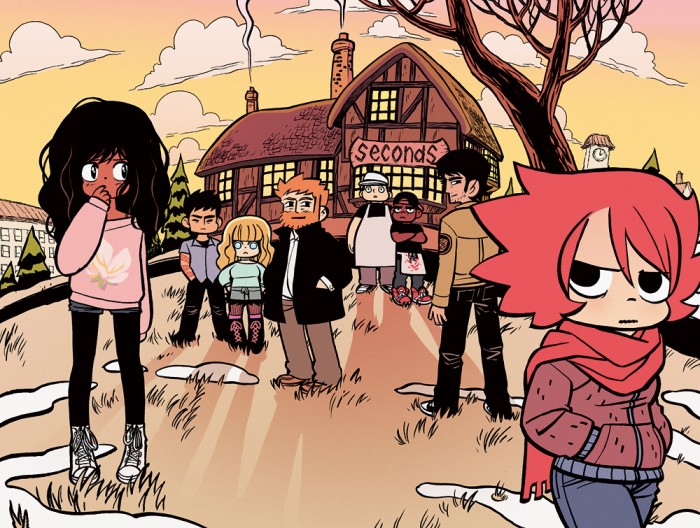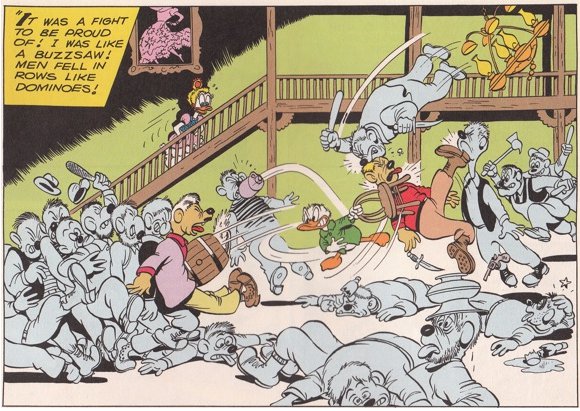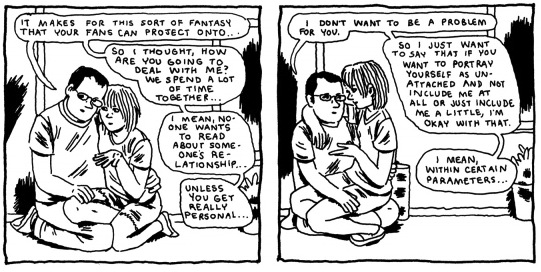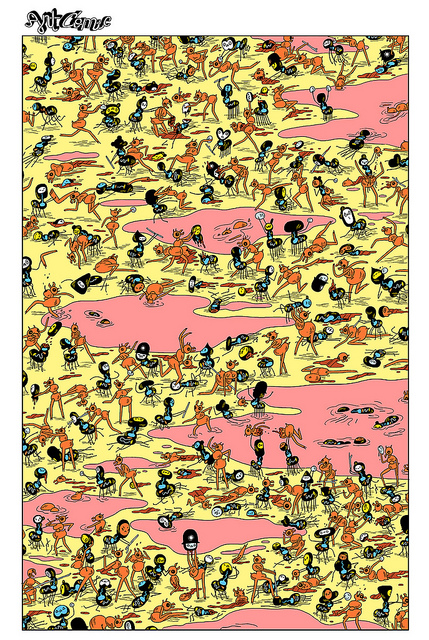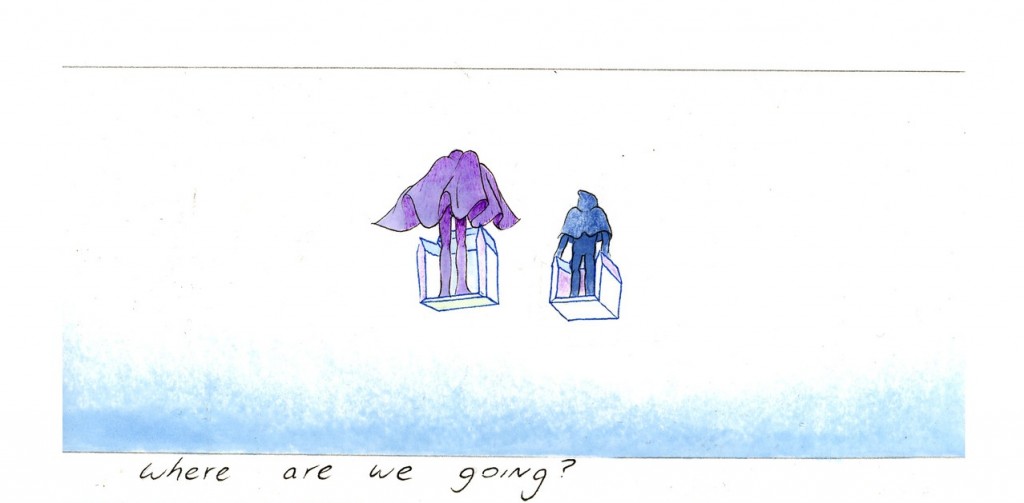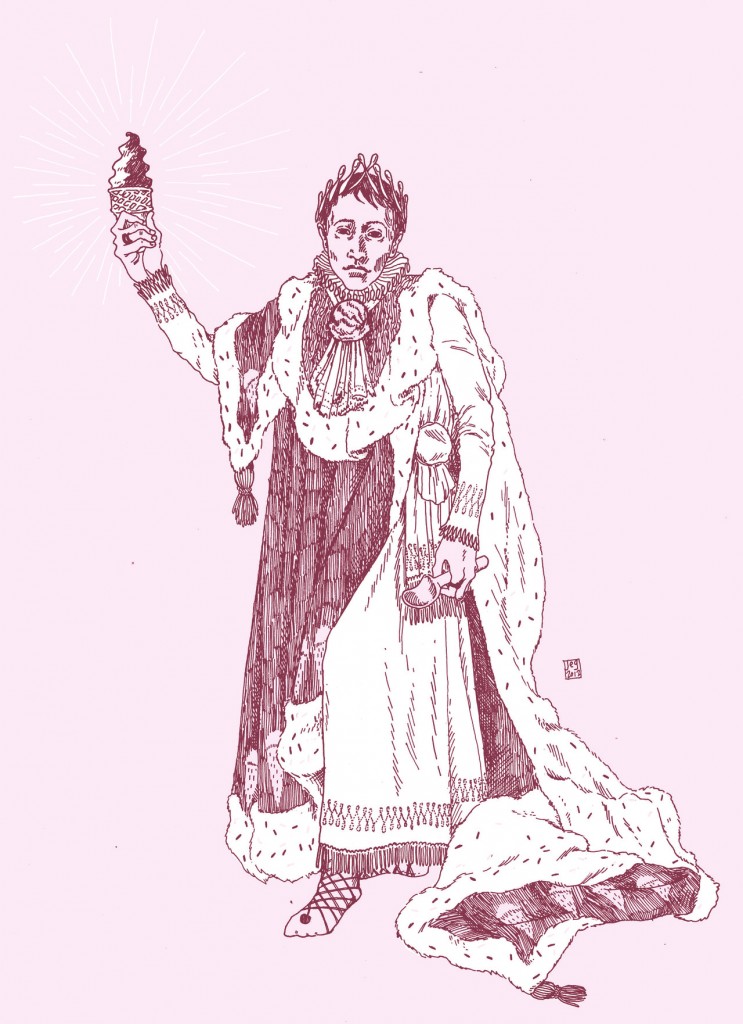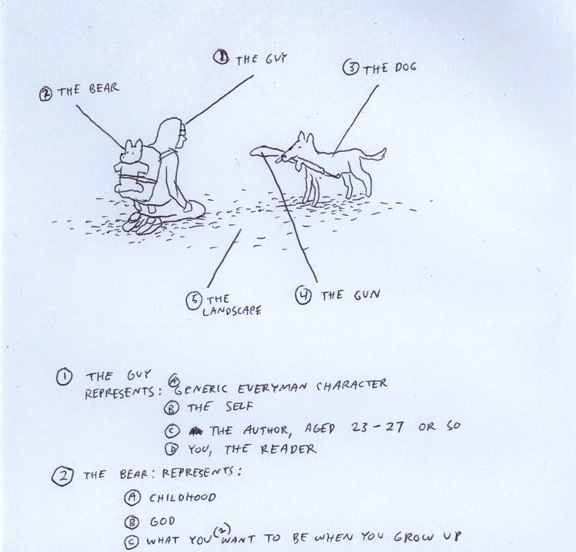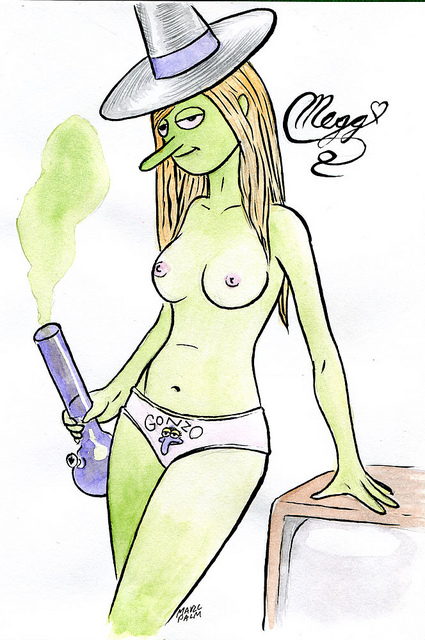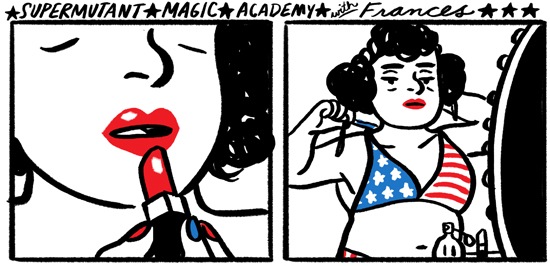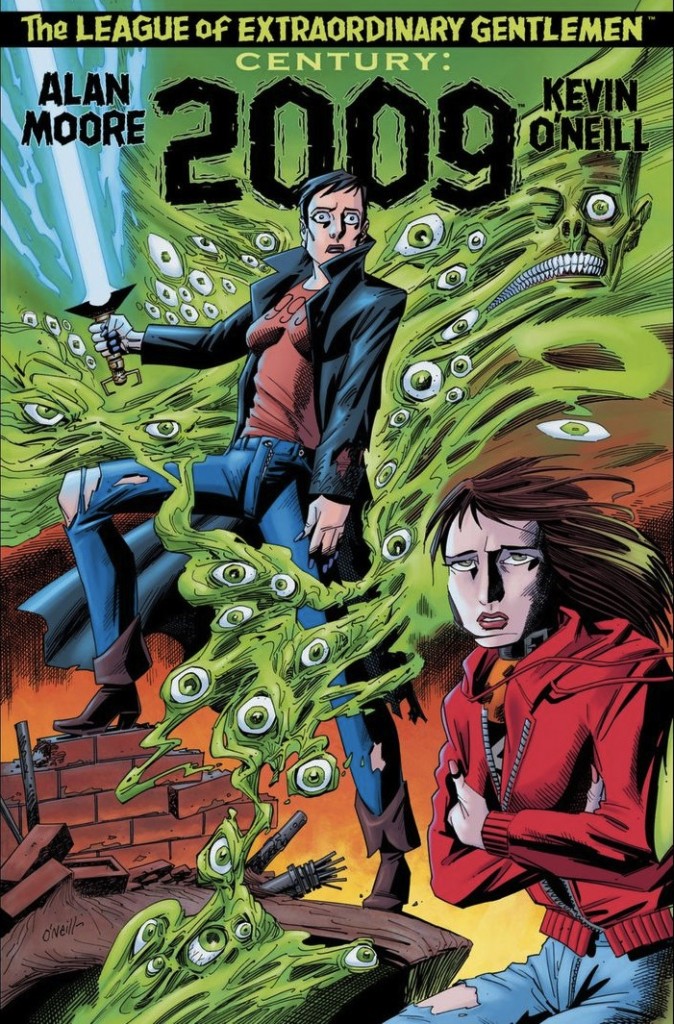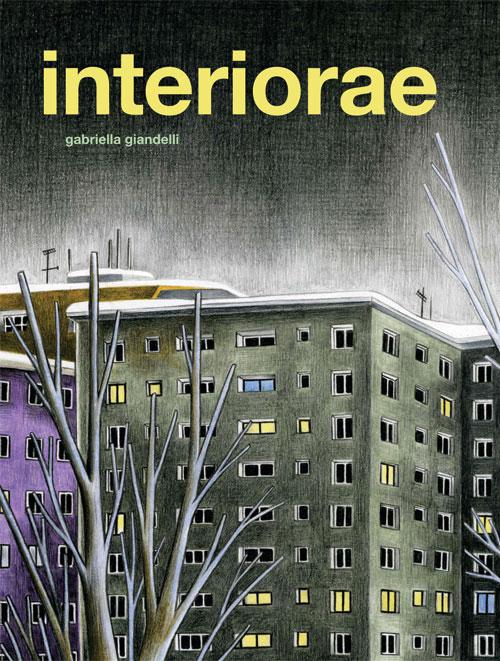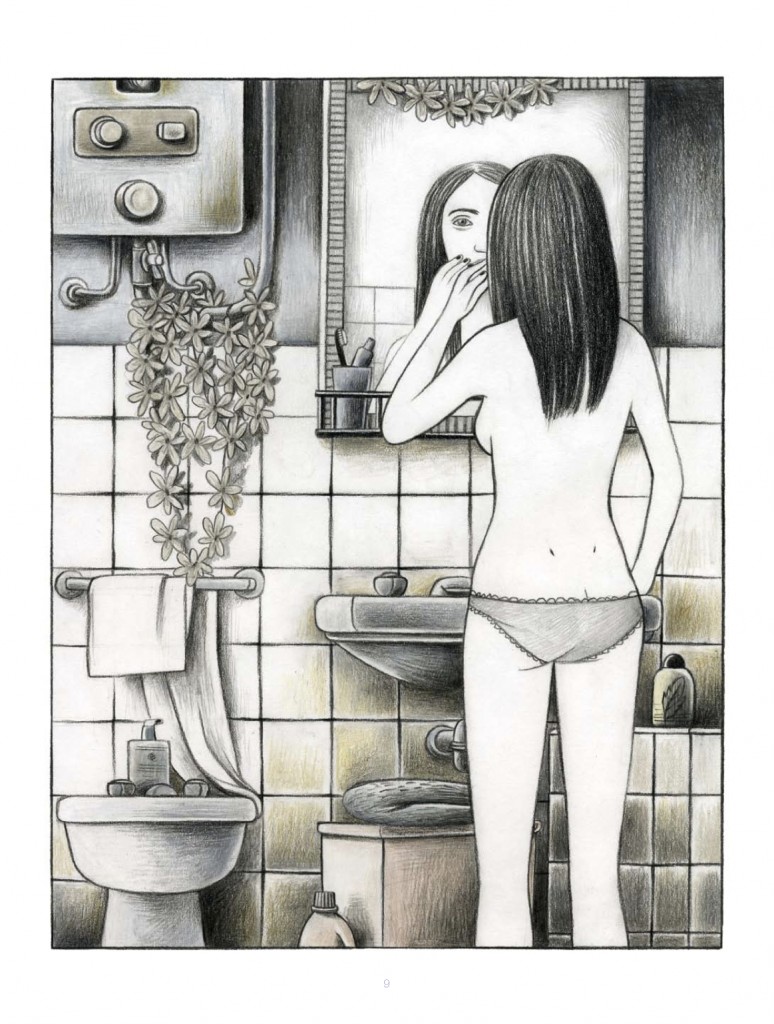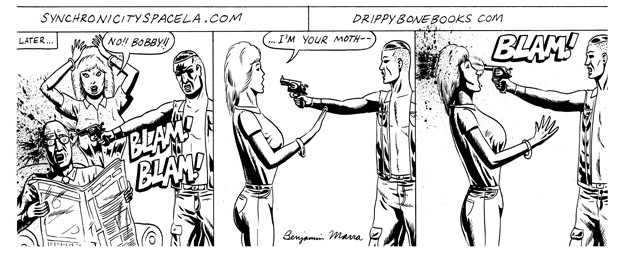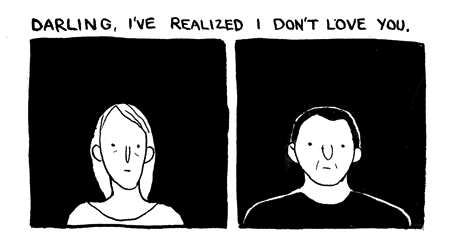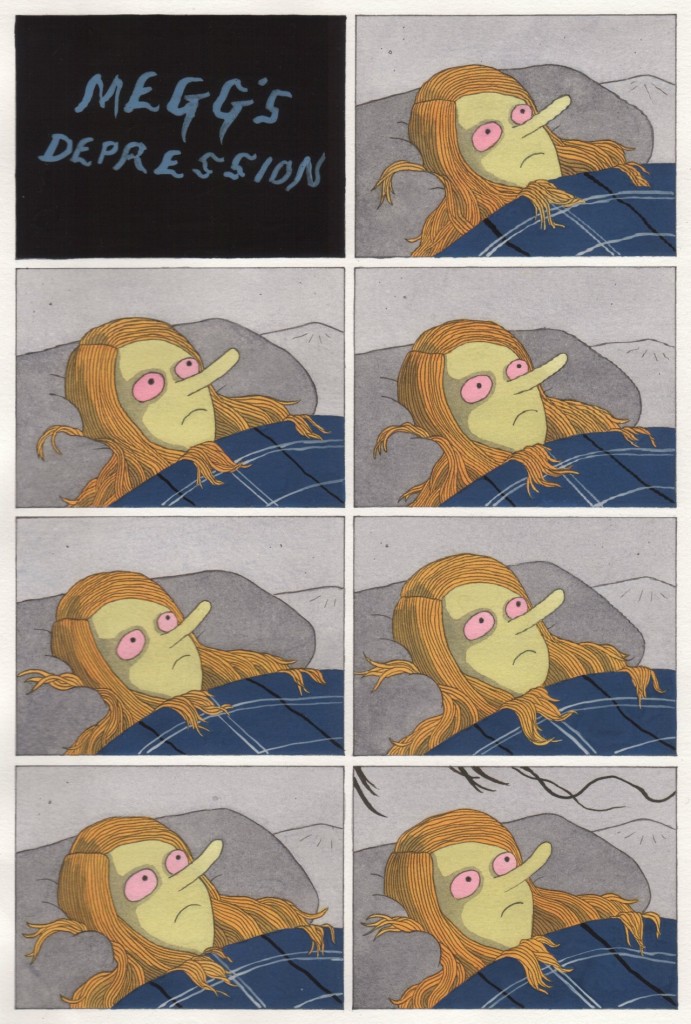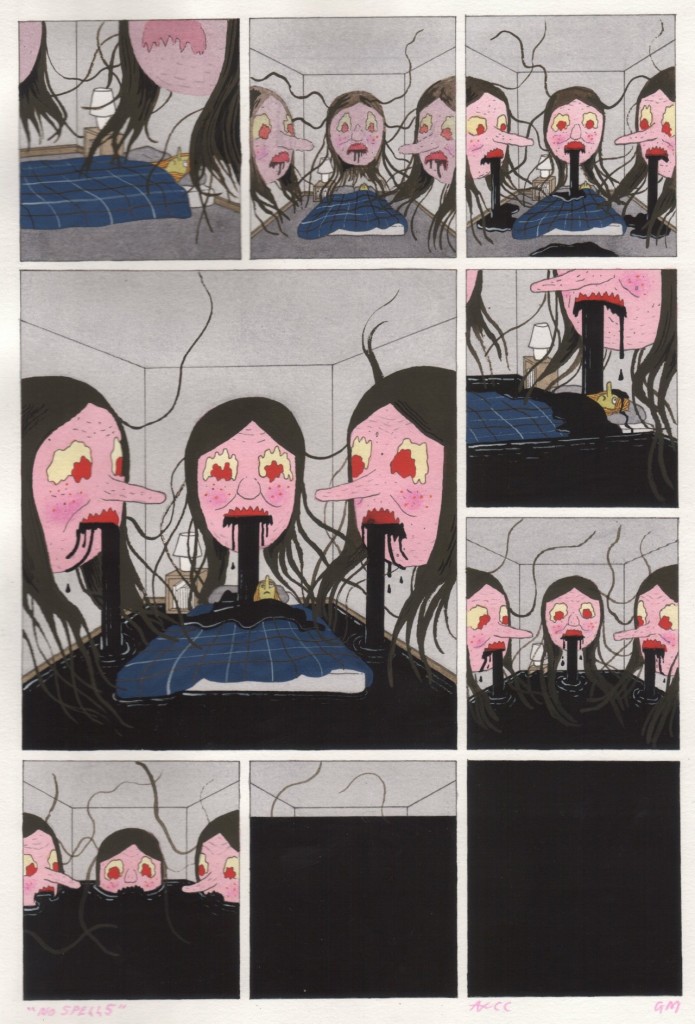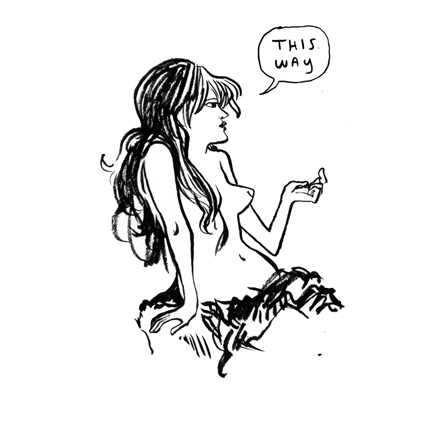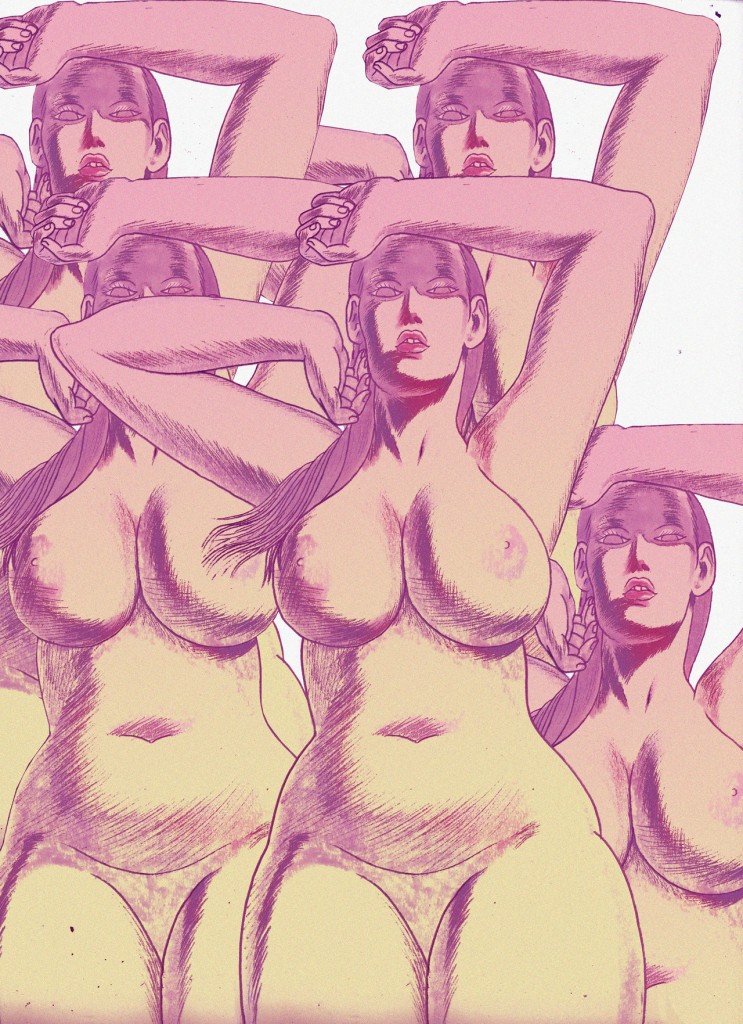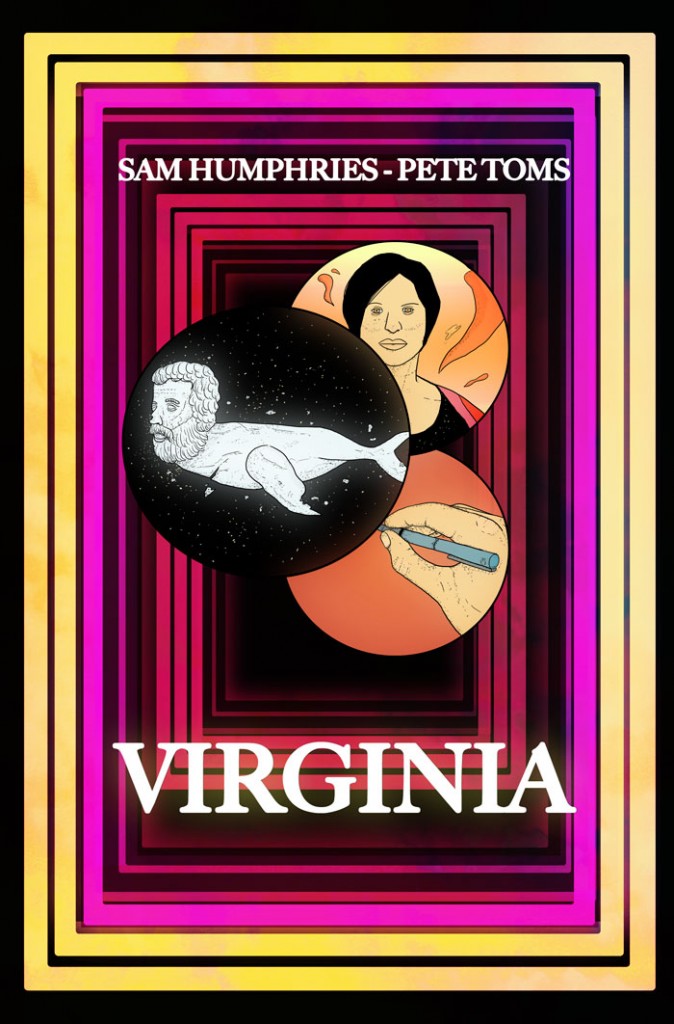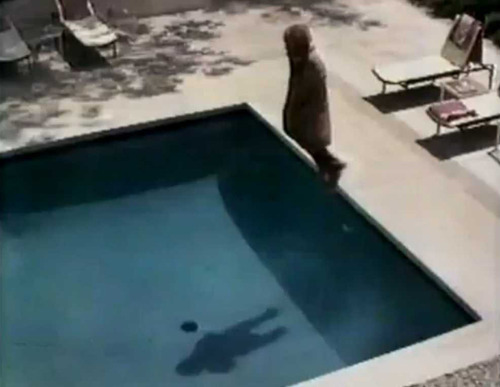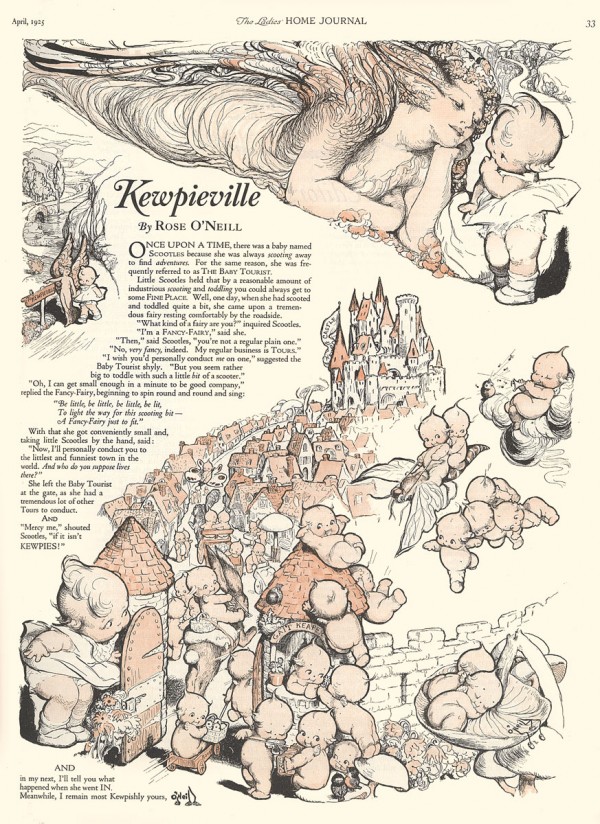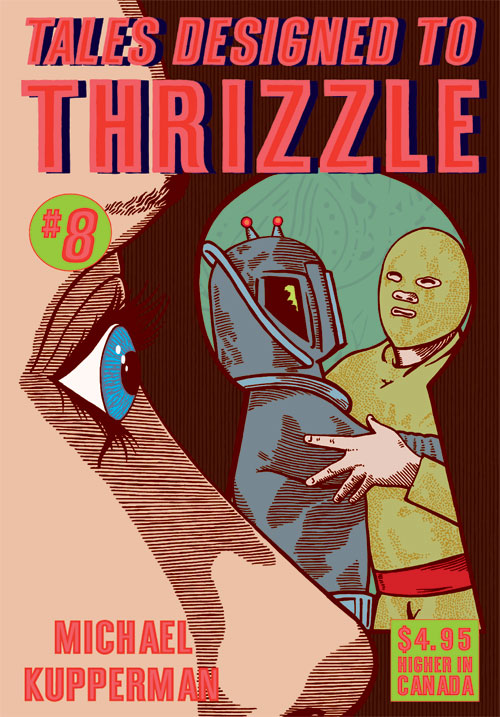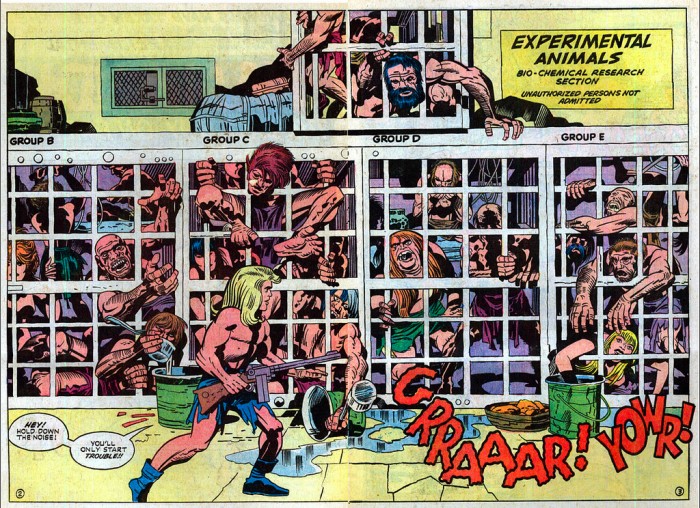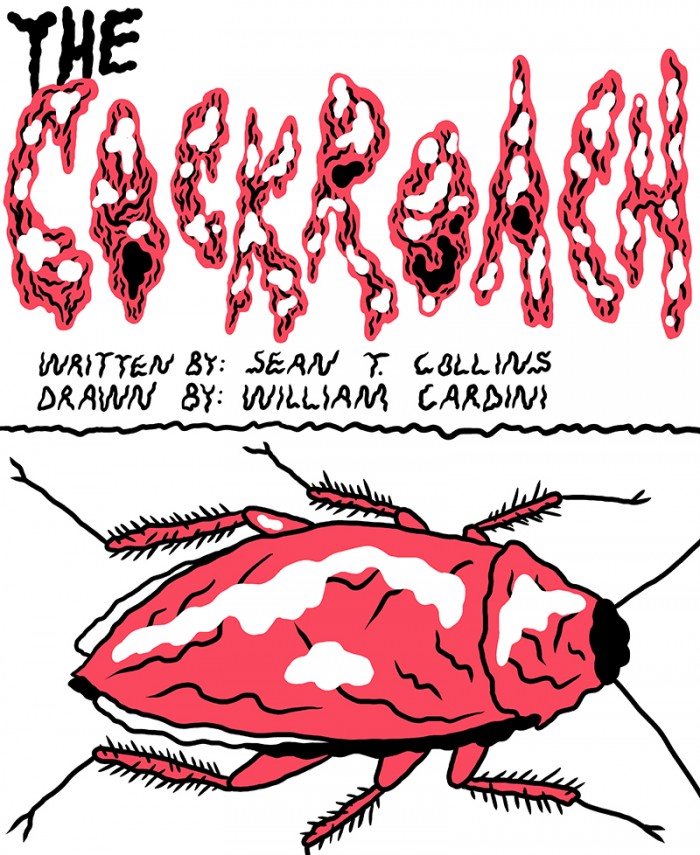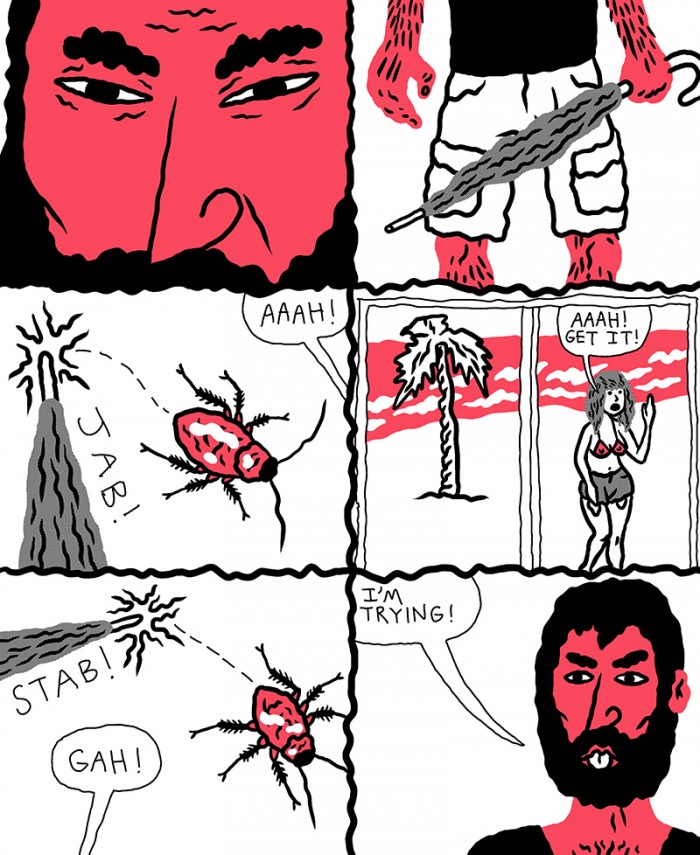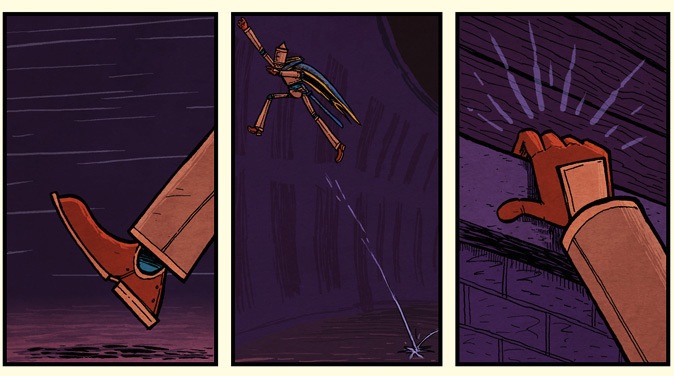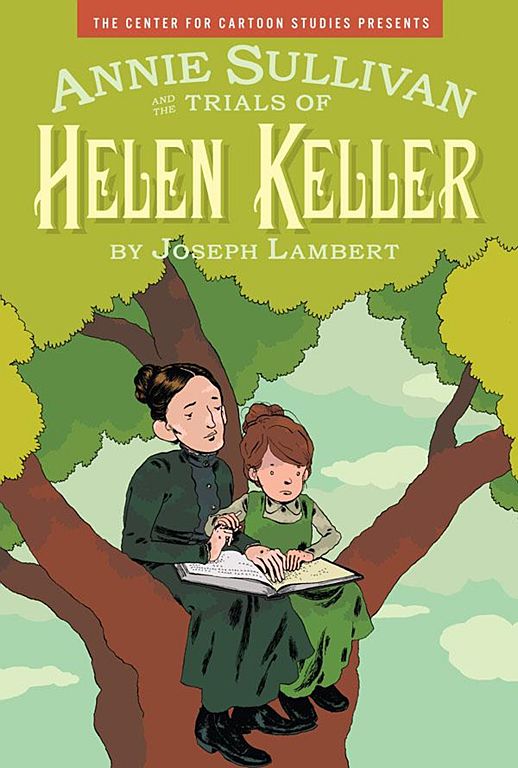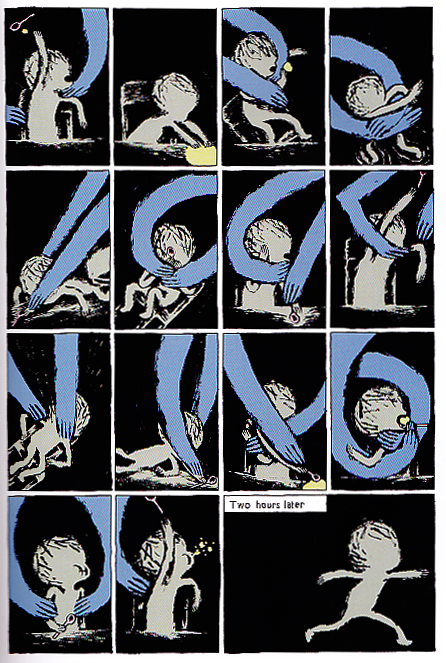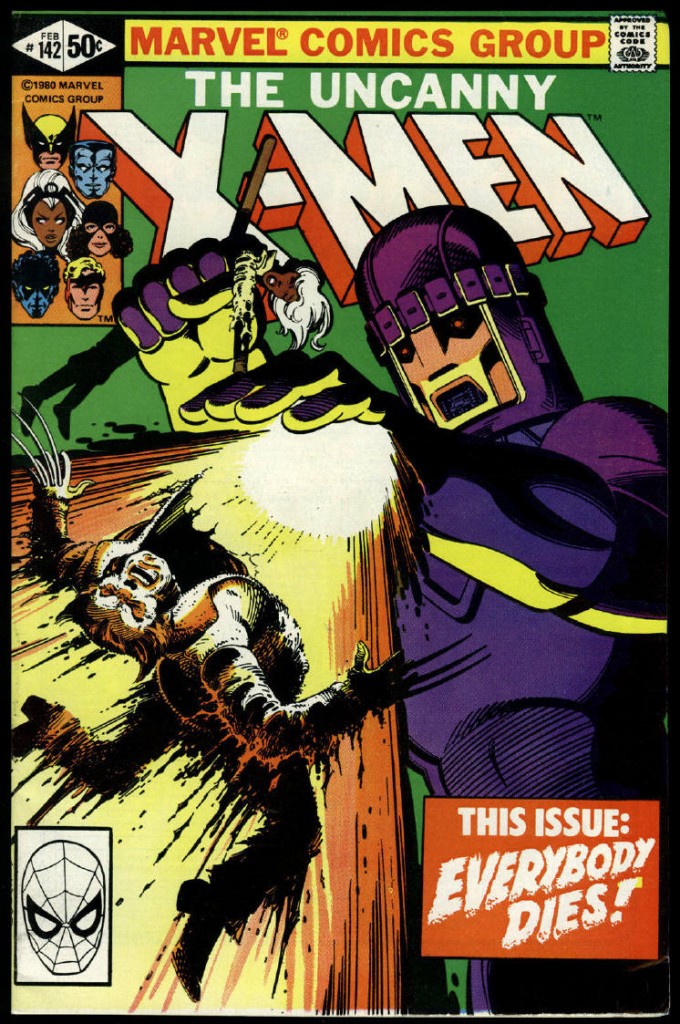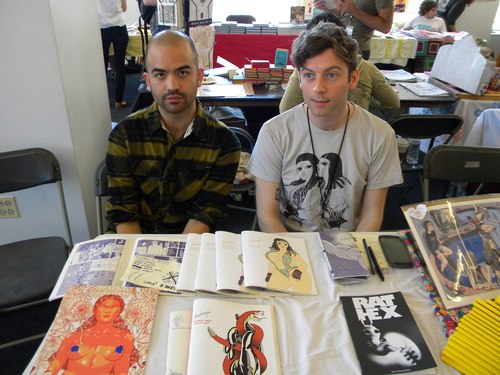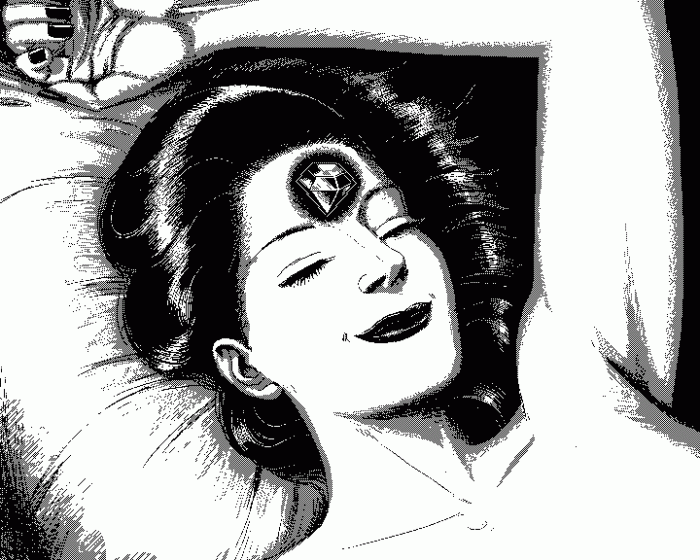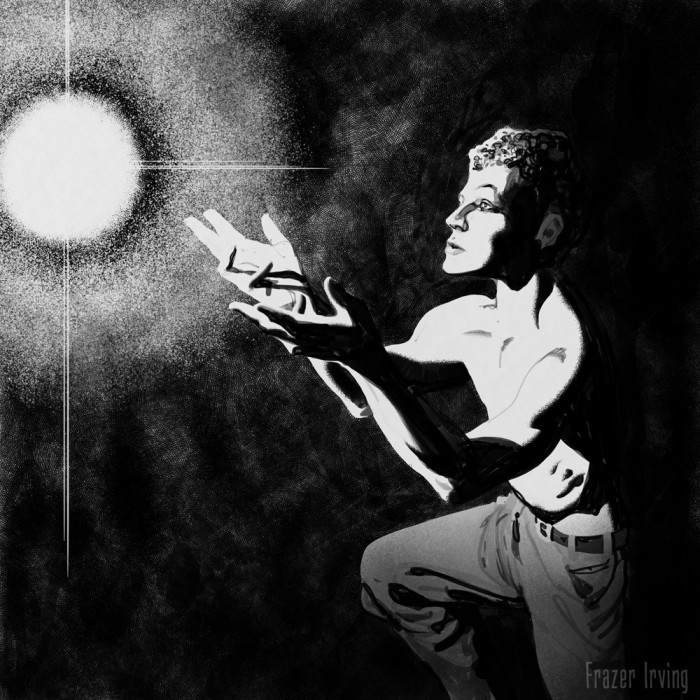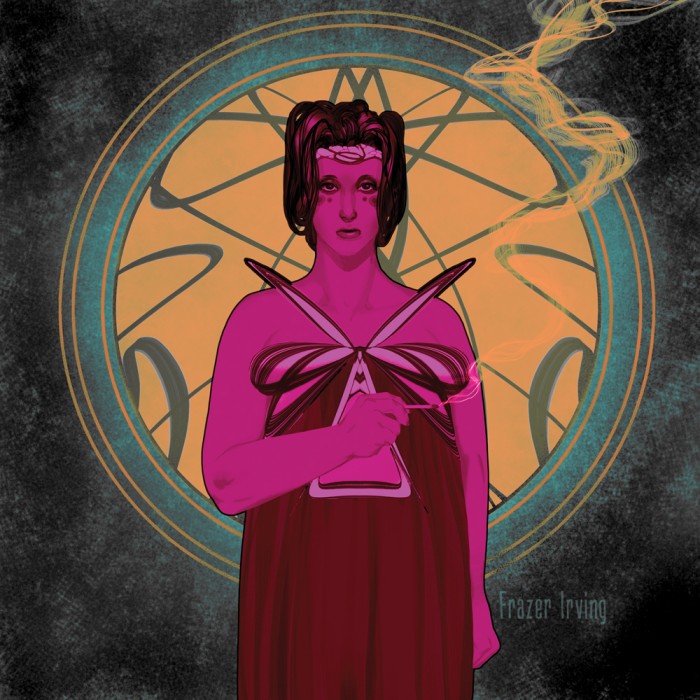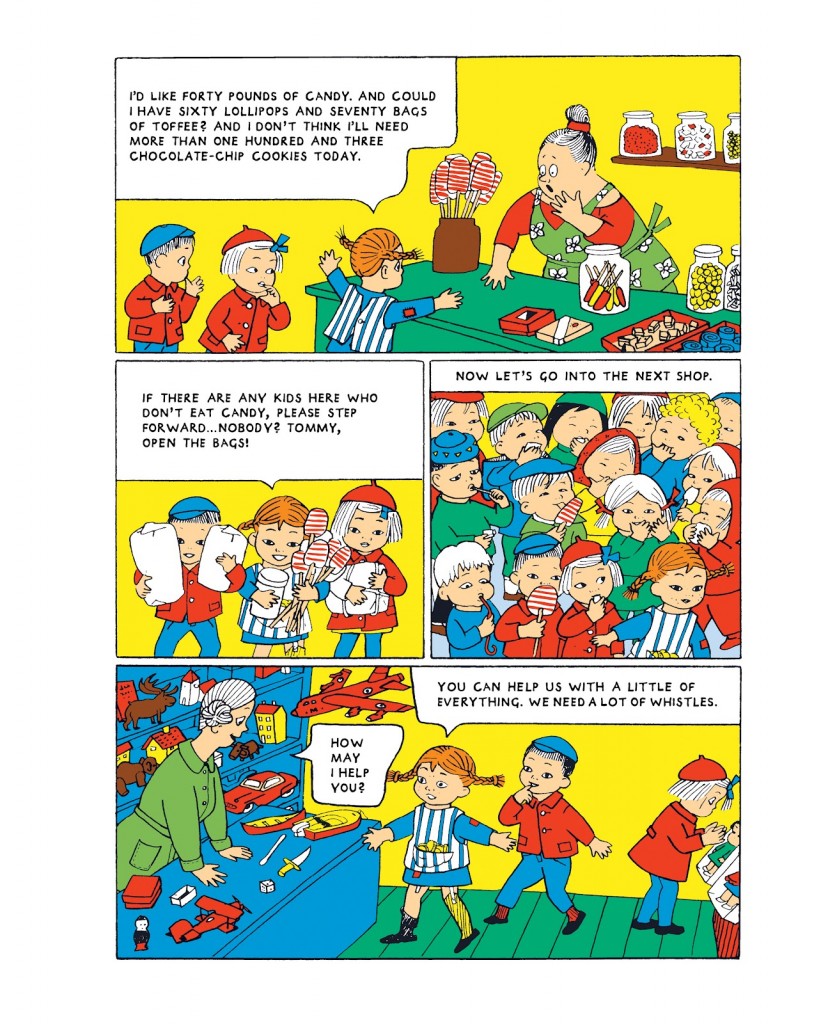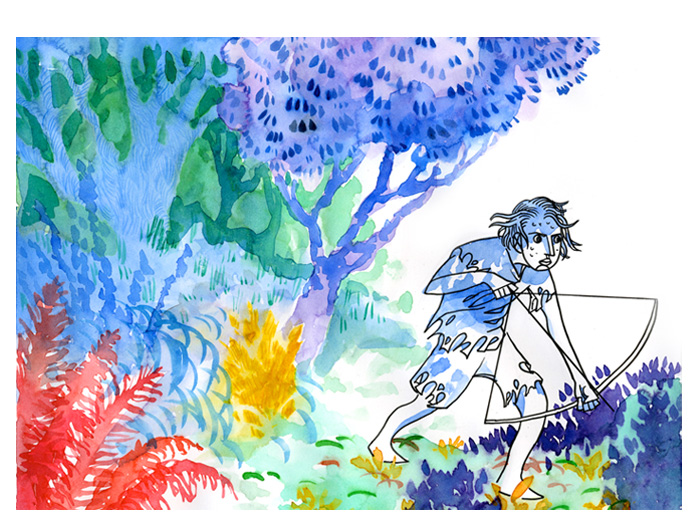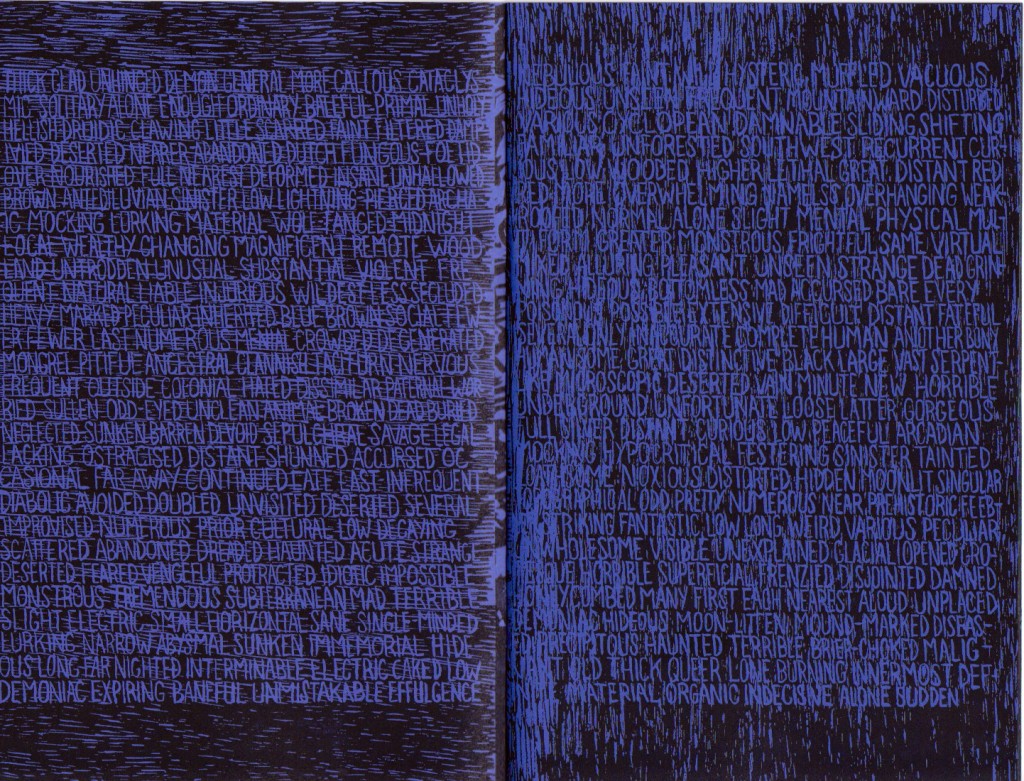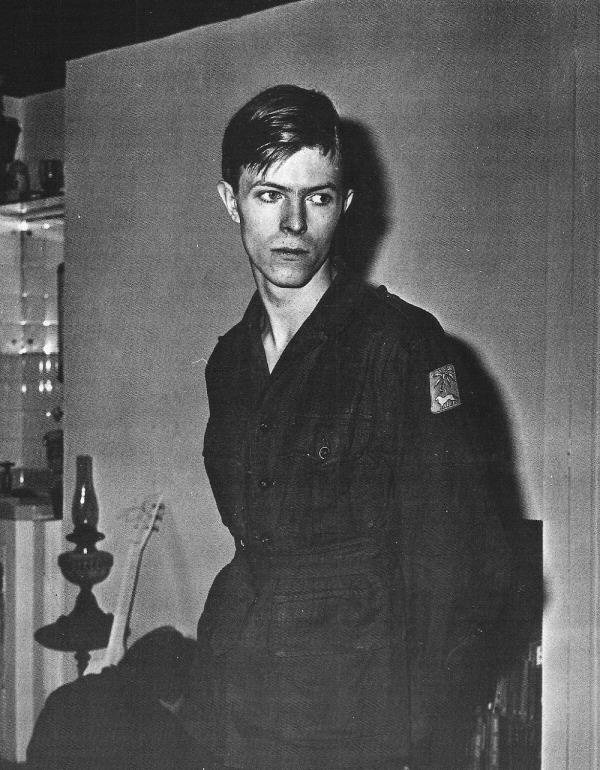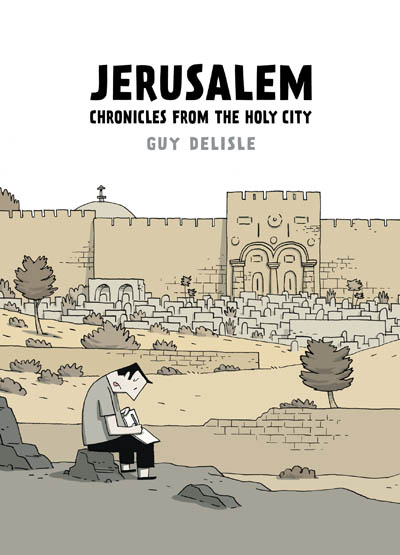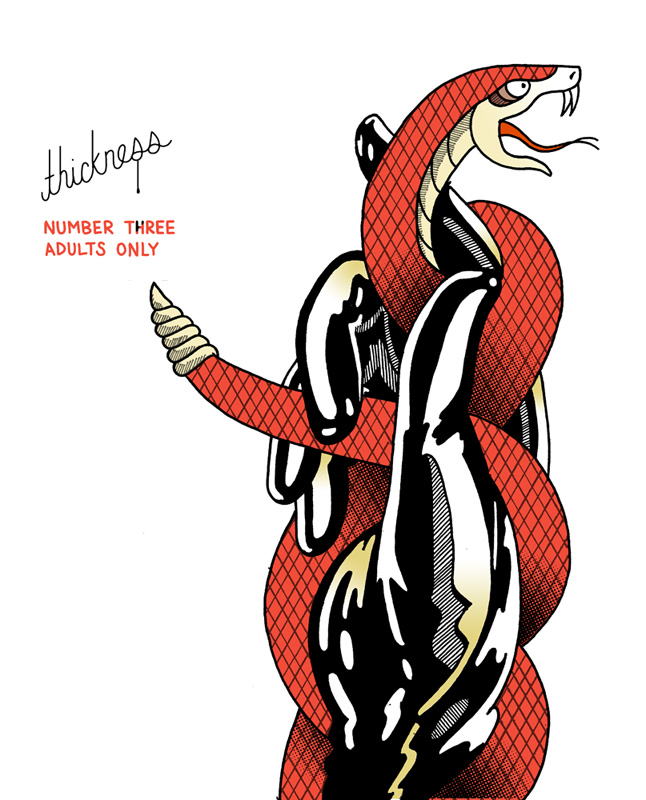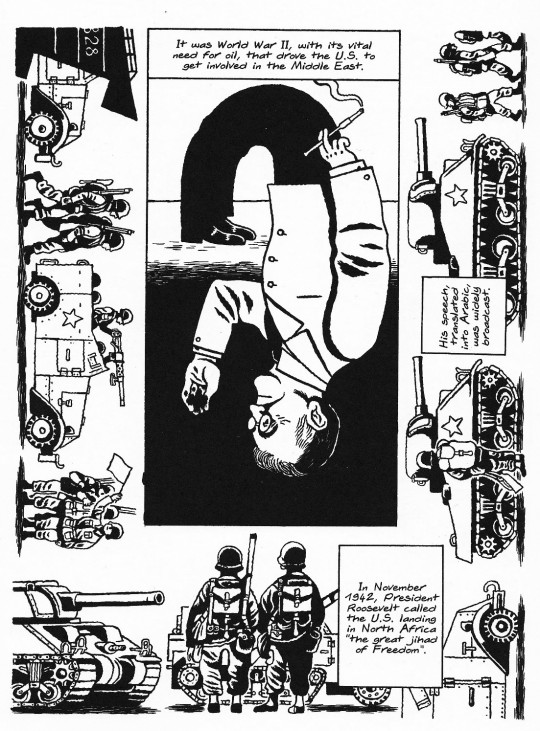* A few Mad Men links to get you started today. Spoilers at the links but not in my linkings.
* I am far too late to the Mad Men Unbuttoned party — marvelous “footnotes” on era signifiers and other details from the show by Natasha Vargas-Cooper. This post in particular is worth, well, 2,000 words.
* On the other hand, I never miss a Mindless Ones Mad Men post, like this one on last week’s ep.
* Oh man, the way John Slattery habitually (unconsciously?) refers to Don as “Draper” in this Vulture interview.
* Moving on, good news: Chuck Forsman heads to Fantagraphics for The End of the Fucking World and Celebrated Summer.
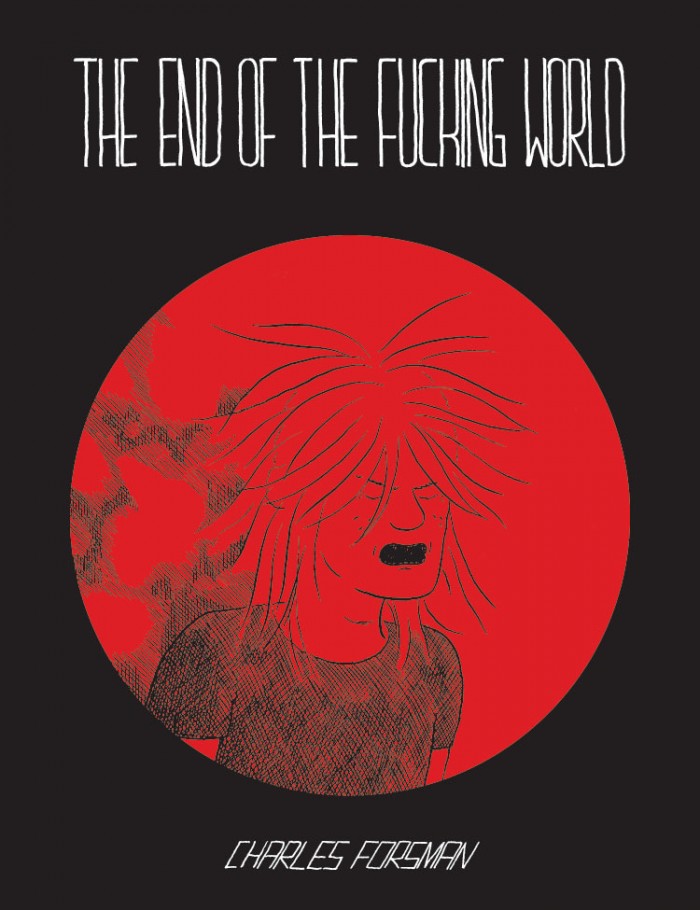
* Writing for The Comics Journal, Frank Santoro delivers this extraordinary characterization of his current (and ongoing) efforts to sell books from his comic collection:
Selling wacky back issues that no one else has is an art. This is what I am always working on. Sitting in a room drawing by my lonesome has destroyed my last few relationships and doesn’t pay nearly as good as hustling comics does. This is more fun. Assembling and disseminating these old comic back out into the comics reading world in an effort to sway opinion about these old forgotten things is my art these days.
My rehabilitation of these comics is no different than Dan [Nadel] doing same with Art Out of Time. We are building on years and years of work by other superfans, other scholars – and then packaging the books for a new audience. Except, unlike Dan, I like to champion the lowest of the low. The black and white explosion of the mid to late 80s is supposed to be the absolute worst moment in comics history. To most, this work is dead. But to me, it’s alive. Solid gold. Top of the charts.
So many unpackable ideas about creation versus curation versus editing here I hardly know where to begin!
* Also at that link, and from Frank’s personal collection, the first of three beautiful pieces from Jonny Negron this week.

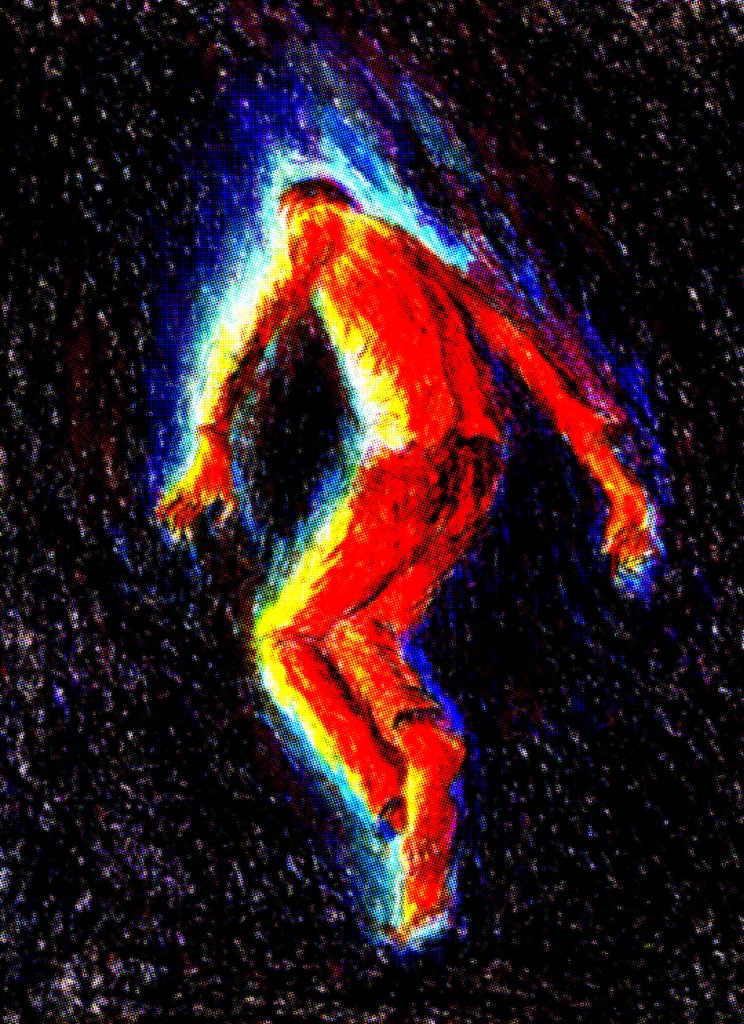
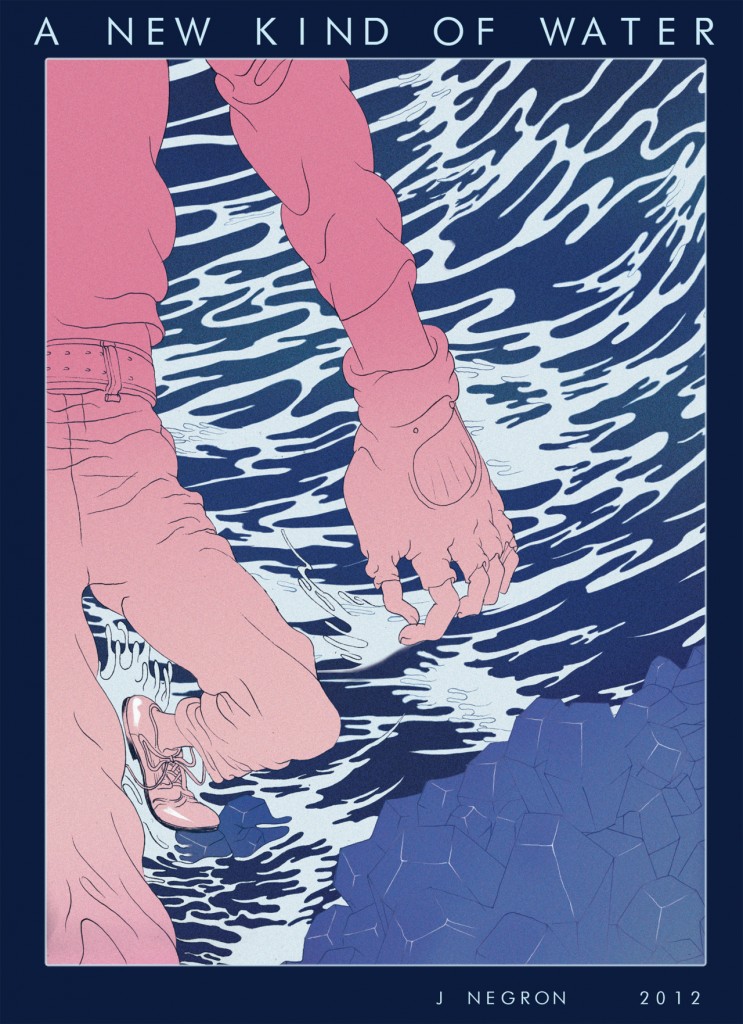
* Fine writing (not that there’s ever another kind, really) from Tom Spurgeon on two landmark comics from the 1980s, Alan Moore & Dave Gibbons’s Watchmen and Frank Miller’s Ronin.
* Speaking of Spurge, here’s another review of My Friend Dahmer by Derf Backderf for me to file away for after I’ve read the book.
* As an aside, all of your Hurt Locker/Avengers Jeremy Renner fans should seek out his turn as the title character in the film Dahmer. Don’t let the “scary” DVD box art fool you — it’s a thoughtful, harrowing, profoundly sad drama that covers, in part, the same time period Derf covers in his graphic novel, and Renner is fabulous in it.
* And another review of Alison Bechdel’s Are You My Mother? to file away for after I’ve read that book, this one by Chris Mautner.
* Speaking of filing away for later, Topless Robot’s Rob Bricken does one of his trademark FAQs for Ridley Scott’s Prometheus, about which I have heard virtually nothing good since it debuted this past weekend.
* Which made it kind of a funny time for Paramount to announce that it was going back for seven weeks of reshoots on its adaptation of Max Brooks’s fine mockumentary “oral history” of a zombie plague, World War Z, with new material written by Lindelof, who co-wrote Prometheus. He has to be a step up from previous screenwriter J. Michael Straczynski, though.
* I have a low threshold for “let’s make fun of a bunch of obviously-going-to-be-bad superhero comics” pieces, but J. Caleb Mozzocco’s piece on the latest New 52 titles from DC was just right.
* On his own blog, Mozzocco dredges up a book I’d forgotten I loved as a kid: America’s Very Own Monsters, on various cryptozoological/fortean creatures from the good ol’ U.S.A., written by Daniel Cohen and illustrated with beautiful hatching by Tom Huffman.
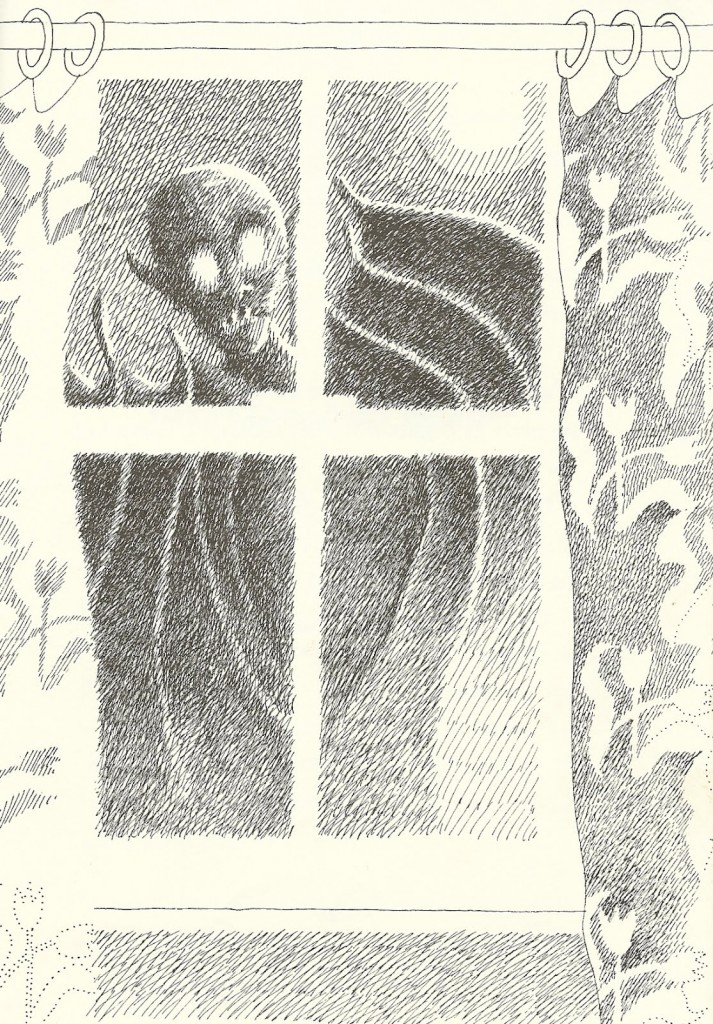
* Feast your nervous system on Lane Milburn’s Mors Ultima Ratio.
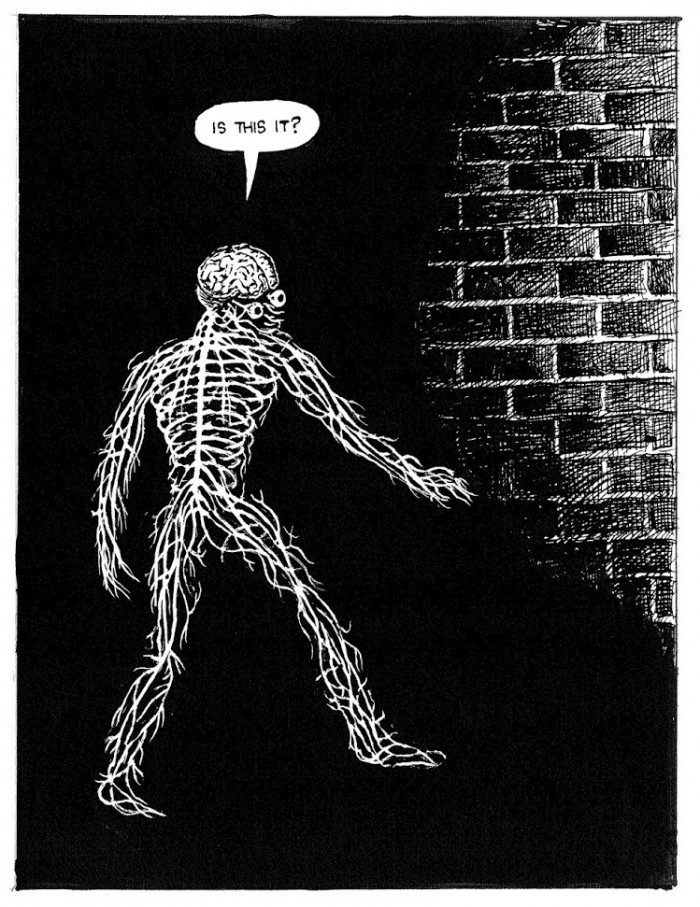
* The latest Vice strip from Johnny Ryan is my favorite thing of his in some time.
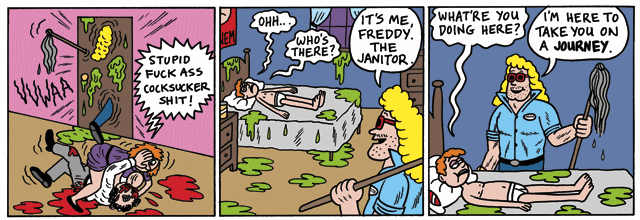
* Ditto the latest Metropolis strip from Ben Katchor. That final row of panels is murder.
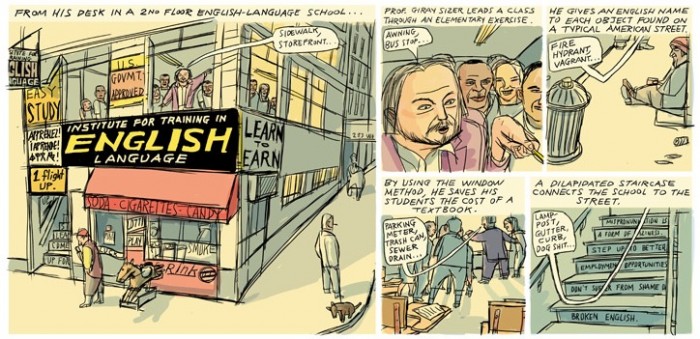
* Ditto the latest Forming by Jesse Moynihan.
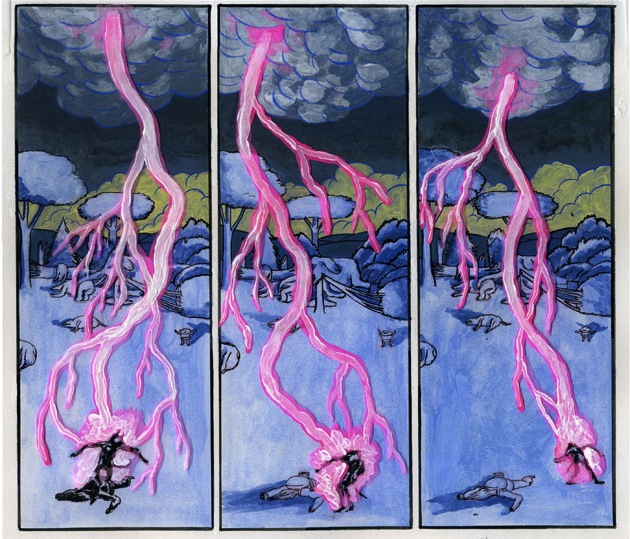
* Jeepers fucking creepers, look at these Walrus covers/posters by Kate Beaton, look at them
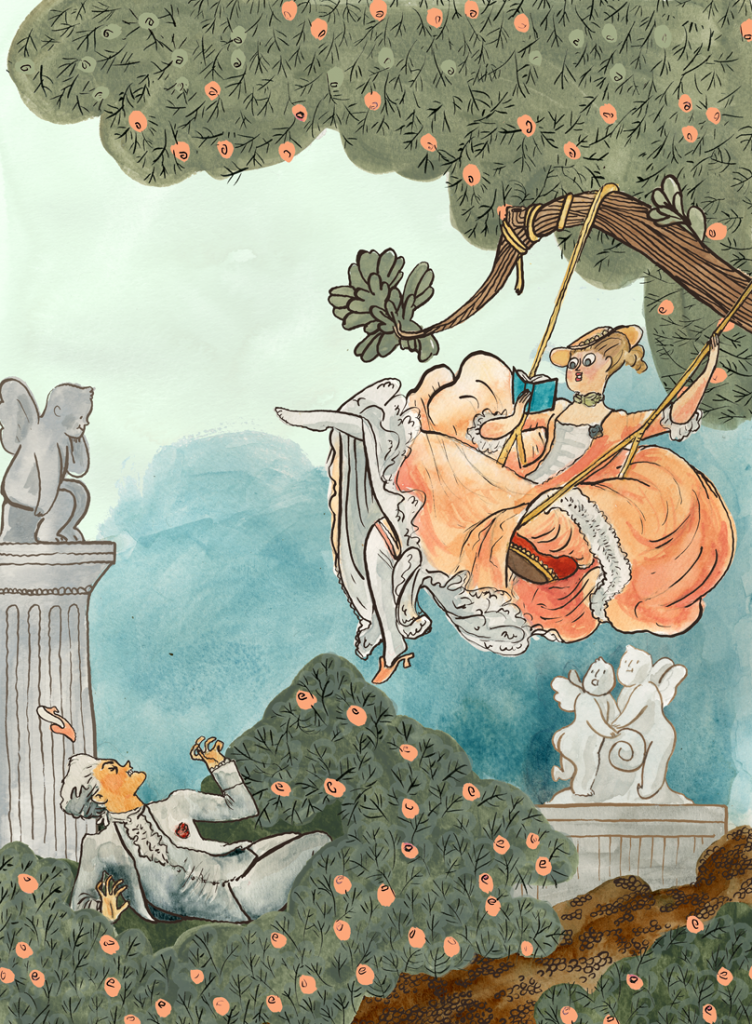
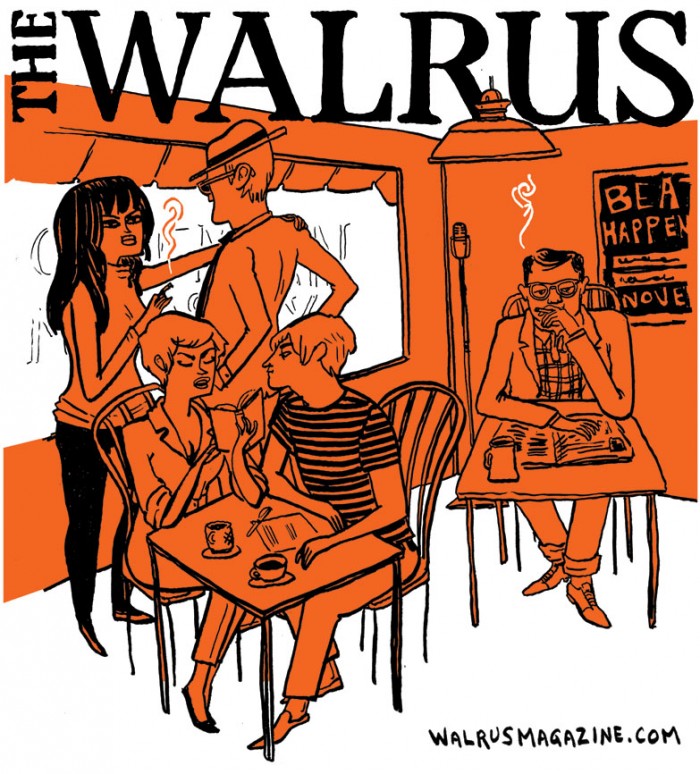
* So there’s a new Joe Sacco book, kind of?
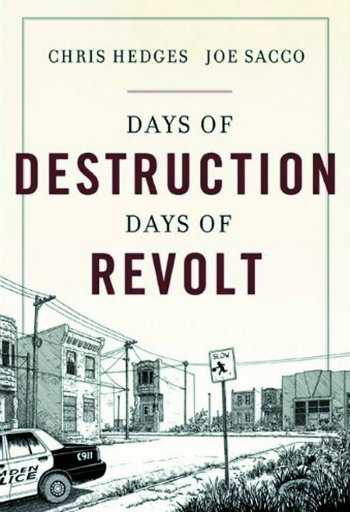
* Major color eyemelt from Lisa Hanawalt.
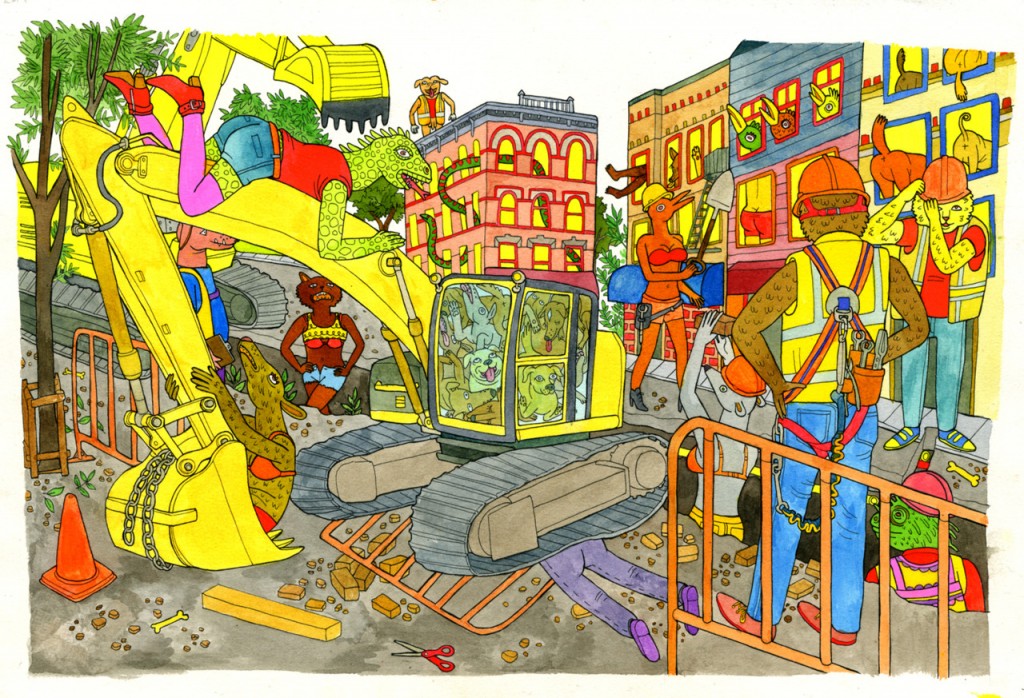
* The cover for Aidan Koch’s Q from Floating World manages to be both lovely and intimidating.
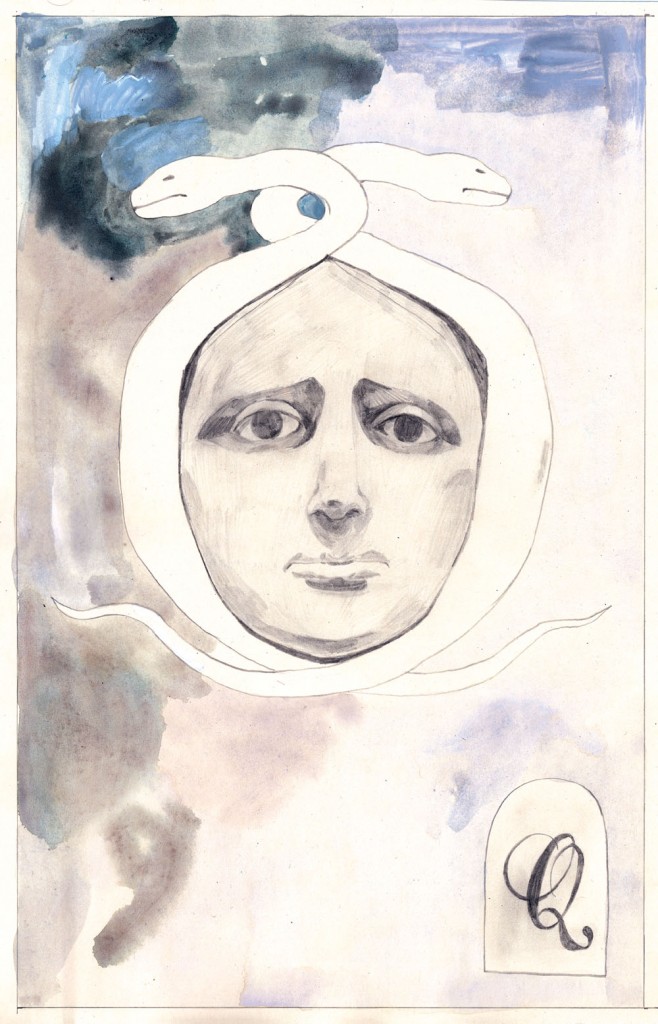
* In putting these two images next to one another, the latest image/gif gallery by Uno Moralez makes him my all-time hero.

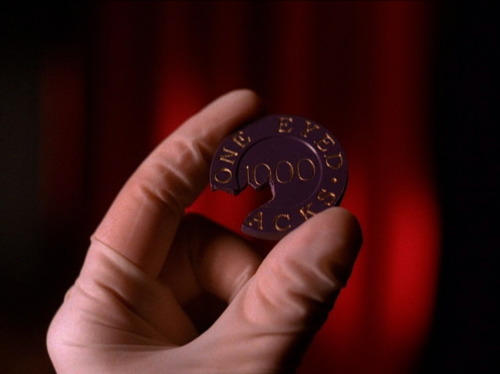
* Matt Maxwell on ’80s action lighting in Paul Verhoeven’s RoboCop. Nothing will ever make it okay for Ray Wise to play anyone working in any kind of law-enforcement capacity.

* Did I not know They’re going to make two movies out of Stephen King’s It, or did I know and forget? You tell me.
* I’ve enjoyed Avengers: Earth’s Mightiest Hero, the Disney XD cartoon based on the Marvel comic property of the same name as created by Stan Lee and Jack Kirby, since it debuted a year ago — it did more to sell me on the hodgepodge nature of the team and its grab-bag of villains than any other incarnation of the team, and I found the animation nice and fluid for a tv action cartoon, and the voice acting really terrific from top to bottom. The show also posited the team as an antidote to government-run black-ops shit rather than an embodiment of it — Tony Stark and Hank Pym founded the team in defiance of Nick Fury, not on his orders — which I think is a much healthier message to send to little kids, if you’re going to be exposing them to narratives of redemptive violence at all. Well, turns out the show’s been canceled in favor of a more directly movie-friendly version. That’s too bad.
* The co-creator of the DC/WB superhero Static Shock died young, penniless, and just shy of homeless. This isn’t some shmoe who got ripped off during the Roosevelt administration when the industry was more or less run by gangsters — this is a guy whose stuff was on the racks during the Image boom. Tells you a lot about comics. Tells you a lot about America.
* Nitsuh Abebe on Hot 97 vs. Nicki Minaj over “real hip-hop”; the last graf is where it’s at. That said, I think there’s an important distinction made between people attacking Nicki’s non-guest-verse work for being “not real hip-hop” (no one older than 14 should give a fuck) and those attacking it because much of it isn’t as good as her straightforward MCing is. People wanting another Ol’ Dirty Bastard/early Busta Rhymes lyrical lunatic more than they want another Katy Perry/late Britney Spears chart mercenary seems like a valid set of preferences to me, even though I like “Super Bass” a lot and enjoy “Starships” more than than most of the soundalike pop-house on the radio right now.
* When this picture was taken, I never expected to be able to caption it “L-R: Dinosaurs vs. Aliens screenwriter Grant Morrison, Gladiators vs. Zombies screenwriter Clive Barker.”

* In much happier Clive Barker news, Morgan Creek, the studio that holds the rights to a blu-ray release of Nightbreed, has given the greenlight to fundraising efforts for “The Cabal Cut” of the film, a two-hour forty-five-minute version in line with Barker’s original intentions.
* Finally, dig it: The great Shawn Cheng comes from nowhere with Destructor fanart. Where does he get those wonderful pelts?
